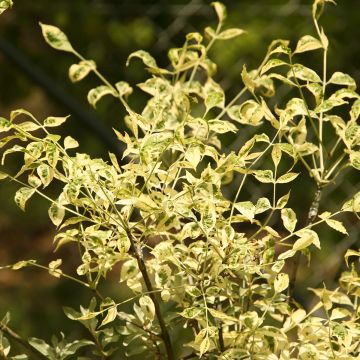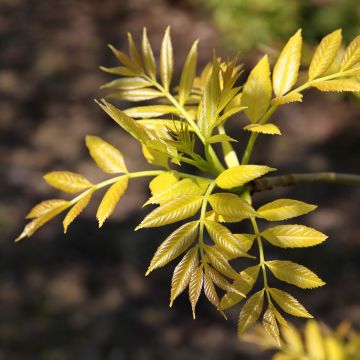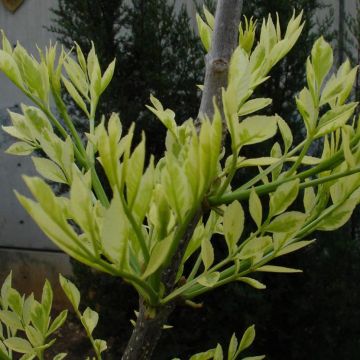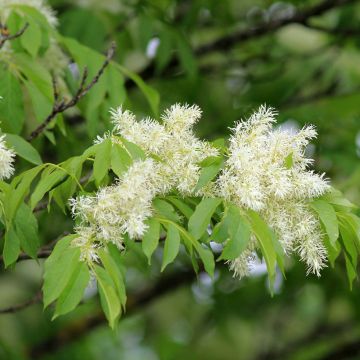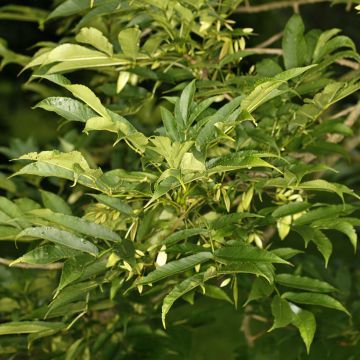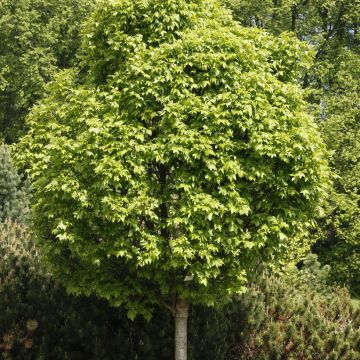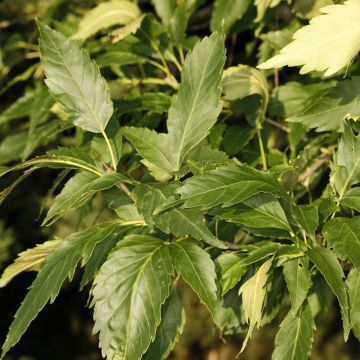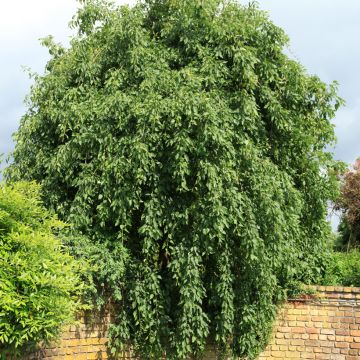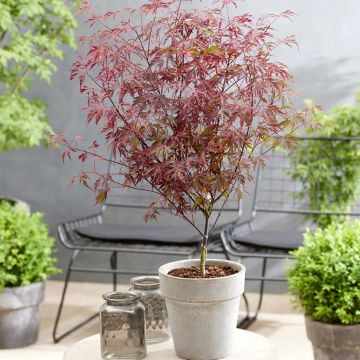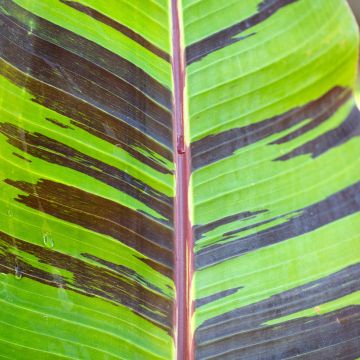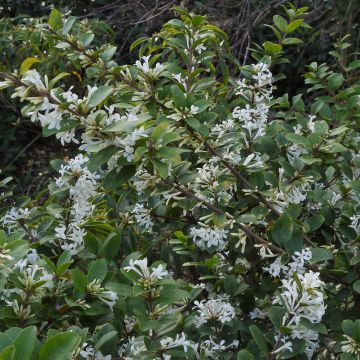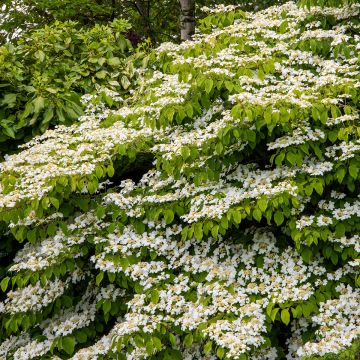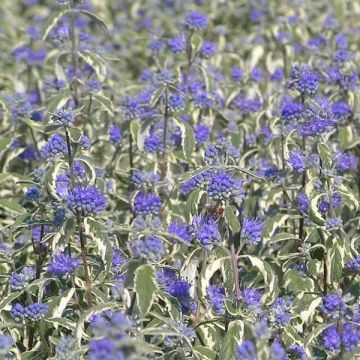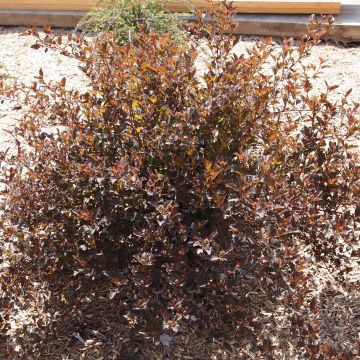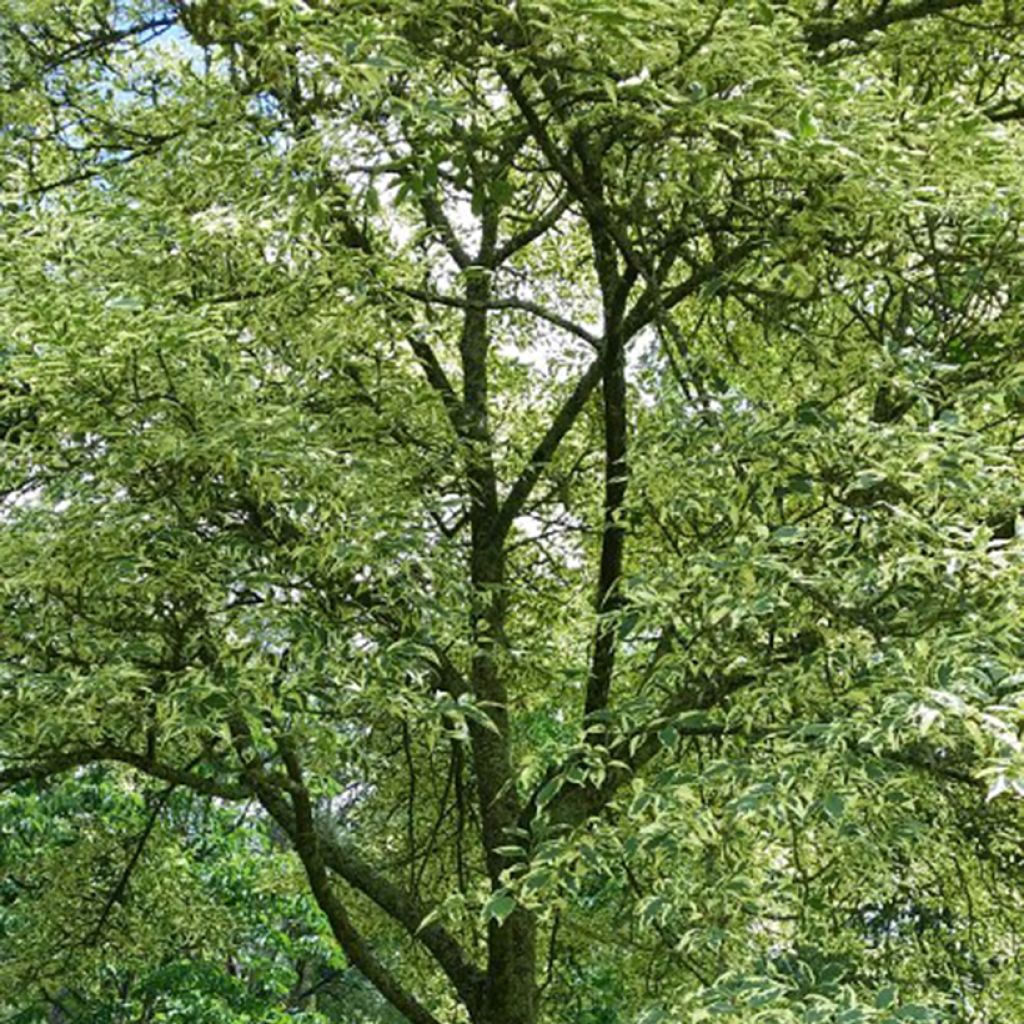

Fraxinus excelsior Argenteovariegata
Fraxinus excelsior Argenteovariegata
Fraxinus excelsior Argenteovariegata
European Ash, Common Ash
Special offer!
Receive a €20 voucher for any order over €90 (excluding delivery costs, credit notes, and plastic-free options)!
1- Add your favorite plants to your cart.
2- Once you have reached €90, confirm your order (you can even choose the delivery date!).
3- As soon as your order is shipped, you will receive an email containing your voucher code, valid for 3 months (90 days).
Your voucher is unique and can only be used once, for any order with a minimum value of €20, excluding delivery costs.
Can be combined with other current offers, non-divisible and non-refundable.
Home or relay delivery (depending on size and destination)
Schedule delivery date,
and select date in basket
This plant carries a 24 months recovery warranty
More information
We guarantee the quality of our plants for a full growing cycle, and will replace at our expense any plant that fails to recover under normal climatic and planting conditions.
Would this plant suit my garden?
Set up your Plantfit profile →
Description
Fraxinus excelsior Argenteovariegata is a rare variety of common ash or European ash with variegated foliage. It forms a tree reaching 7m in height after 15 to 20 years. Its silhouette is graceful and its foliage very bright. Its young leaves are striped with white and pink in spring, the older ones are finely speckled with white and become dark green in mid-summer. This marbled foliage is most visible on young specimens, as the canopy grows taller and the tree matures, it becomes less visible. The intensity of the marbling is not constant, some years it is more pronounced than others. There is no autumn colouration in this variety. This slow-growing, beautiful and undemanding cultivar requires a suitable location to reveal all its charm.
Fraxinus excelsior, commonly known as common ash or European ash, is a tree of the olive family, just like the olive tree, jasmine, privet, or lilac. It is mainly found in Europe, Scandinavia, and Russia, where it is common on riverbanks, as well as in forests. It can reach a height of 20 to 30 metres and live up to 150 to 200 years. Its trunk is usually straight and its canopy elongated.
The Argenteovariegata variety was first described in England by Richard Weston in 1770. This variegated ash forms a tree with a broad column, with a canopy in a single trunk or several loose trunks. The initial crown is elevated. Slow-growing, it reaches a height of 6 to 8m and a spread of about 5 to 7m after 15 to 20 years. The bark of the branches is ash-coloured and smooth, then it cracks on the surface with age. The leaves are large and pinnate, composed of 9 to 11 lanceolate leaflets with serrated edges. The leaves develop late, in May, and fall early in autumn without changing colour. They are striped with white on the youngest leaves and speckled with white on the older ones. Besides being more visible on young specimens before the canopy is very tall, the marbling is also inconsistent from one year to another. An insignificant flowering occurs in April, followed by decorative, 3 to 3.5cm long fruits, samaras, in dense clusters, which remain on the tree during winter.
The common ash Argenteovariegata is a tree with an elegant silhouette and foliage, magnificent in its young years (which is a long time for a tree). It is robust and resistant to winter cold to -30°C. It requires fertile, deep, moist soil with an acidic to neutral pH, in a sunny or semi-shaded location. It is resistant to air pollution and strong winds. It is sensitive to stagnant water and water shortage, with leaves scorching in high heat. It can be planted alone or in groups for filtered shade or to add colour and light to the garden. It is recommended for gardens, parks, streets, squares, and large lawns.
Report an error about the product description
Plant habit
Flowering
Foliage
Safety measures
Botanical data
Fraxinus
excelsior
Argenteovariegata
Oleaceae
European Ash, Common Ash
Cultivar or hybrid
atteinterespiratoire
Cette plante peut entraîner des symptômes allergiques.
Evitez de la planter si vous ou vos proches souffrez de rhinite saisonnière ("rhume des foins").
Davantage d'informations sur https://plantes-risque.info
Other Fraxinus - Ash tree
View all →Planting and care
Plant your Fraxinus excelsior Argenteovariegata in autumn or spring, choose an open location, in non-scorching sun, where the soil is deep and keep in mind the space it will take in the long term. If necessary, create a drainage pit with stones if your soil is suffocating. If your soil is poor, adding leaf compost will be beneficial. Maintain regular watering during the summer following planting and make sure to protect it from prolonged droughts for another year, mulching can help keep the base moist, and space out watering. It is important to keep in mind that this tree needs consistently moist soil, at least at depth. It is perfectly frost resistant. Pruning consists of balancing the tree's habit every 3 years or so by aerating the centre of the canopy.
Planting period
Intended location
Care
Planting & care advice
This item has not been reviewed yet - be the first to leave a review about it.
Similar products
Haven't found what you were looking for?
Hardiness is the lowest winter temperature a plant can endure without suffering serious damage or even dying. However, hardiness is affected by location (a sheltered area, such as a patio), protection (winter cover) and soil type (hardiness is improved by well-drained soil).

Photo Sharing Terms & Conditions
In order to encourage gardeners to interact and share their experiences, Promesse de fleurs offers various media enabling content to be uploaded onto its Site - in particular via the ‘Photo sharing’ module.
The User agrees to refrain from:
- Posting any content that is illegal, prejudicial, insulting, racist, inciteful to hatred, revisionist, contrary to public decency, that infringes on privacy or on the privacy rights of third parties, in particular the publicity rights of persons and goods, intellectual property rights, or the right to privacy.
- Submitting content on behalf of a third party;
- Impersonate the identity of a third party and/or publish any personal information about a third party;
In general, the User undertakes to refrain from any unethical behaviour.
All Content (in particular text, comments, files, images, photos, videos, creative works, etc.), which may be subject to property or intellectual property rights, image or other private rights, shall remain the property of the User, subject to the limited rights granted by the terms of the licence granted by Promesse de fleurs as stated below. Users are at liberty to publish or not to publish such Content on the Site, notably via the ‘Photo Sharing’ facility, and accept that this Content shall be made public and freely accessible, notably on the Internet.
Users further acknowledge, undertake to have ,and guarantee that they hold all necessary rights and permissions to publish such material on the Site, in particular with regard to the legislation in force pertaining to any privacy, property, intellectual property, image, or contractual rights, or rights of any other nature. By publishing such Content on the Site, Users acknowledge accepting full liability as publishers of the Content within the meaning of the law, and grant Promesse de fleurs, free of charge, an inclusive, worldwide licence for the said Content for the entire duration of its publication, including all reproduction, representation, up/downloading, displaying, performing, transmission, and storage rights.
Users also grant permission for their name to be linked to the Content and accept that this link may not always be made available.
By engaging in posting material, Users consent to their Content becoming automatically accessible on the Internet, in particular on other sites and/or blogs and/or web pages of the Promesse de fleurs site, including in particular social pages and the Promesse de fleurs catalogue.
Users may secure the removal of entrusted content free of charge by issuing a simple request via our contact form.
The flowering period indicated on our website applies to countries and regions located in USDA zone 8 (France, the United Kingdom, Ireland, the Netherlands, etc.)
It will vary according to where you live:
- In zones 9 to 10 (Italy, Spain, Greece, etc.), flowering will occur about 2 to 4 weeks earlier.
- In zones 6 to 7 (Germany, Poland, Slovenia, and lower mountainous regions), flowering will be delayed by 2 to 3 weeks.
- In zone 5 (Central Europe, Scandinavia), blooming will be delayed by 3 to 5 weeks.
In temperate climates, pruning of spring-flowering shrubs (forsythia, spireas, etc.) should be done just after flowering.
Pruning of summer-flowering shrubs (Indian Lilac, Perovskia, etc.) can be done in winter or spring.
In cold regions as well as with frost-sensitive plants, avoid pruning too early when severe frosts may still occur.
The planting period indicated on our website applies to countries and regions located in USDA zone 8 (France, United Kingdom, Ireland, Netherlands).
It will vary according to where you live:
- In Mediterranean zones (Marseille, Madrid, Milan, etc.), autumn and winter are the best planting periods.
- In continental zones (Strasbourg, Munich, Vienna, etc.), delay planting by 2 to 3 weeks in spring and bring it forward by 2 to 4 weeks in autumn.
- In mountainous regions (the Alps, Pyrenees, Carpathians, etc.), it is best to plant in late spring (May-June) or late summer (August-September).
The harvesting period indicated on our website applies to countries and regions in USDA zone 8 (France, England, Ireland, the Netherlands).
In colder areas (Scandinavia, Poland, Austria...) fruit and vegetable harvests are likely to be delayed by 3-4 weeks.
In warmer areas (Italy, Spain, Greece, etc.), harvesting will probably take place earlier, depending on weather conditions.
The sowing periods indicated on our website apply to countries and regions within USDA Zone 8 (France, UK, Ireland, Netherlands).
In colder areas (Scandinavia, Poland, Austria...), delay any outdoor sowing by 3-4 weeks, or sow under glass.
In warmer climes (Italy, Spain, Greece, etc.), bring outdoor sowing forward by a few weeks.






























